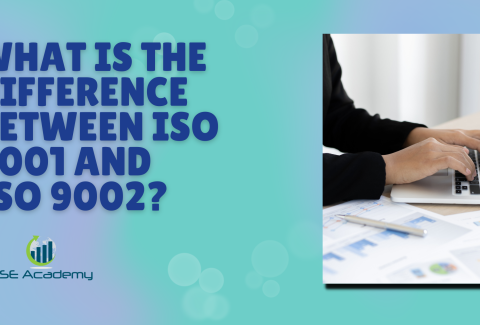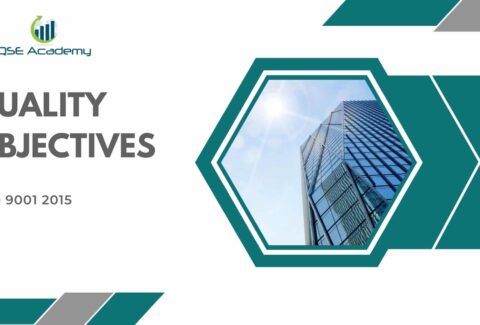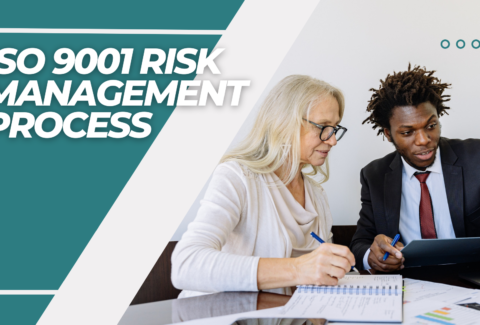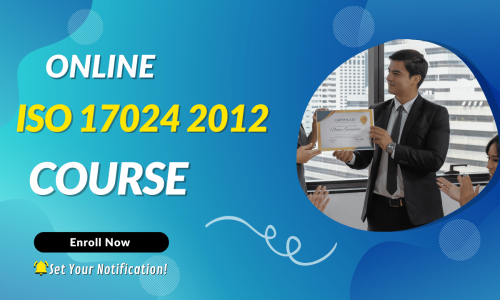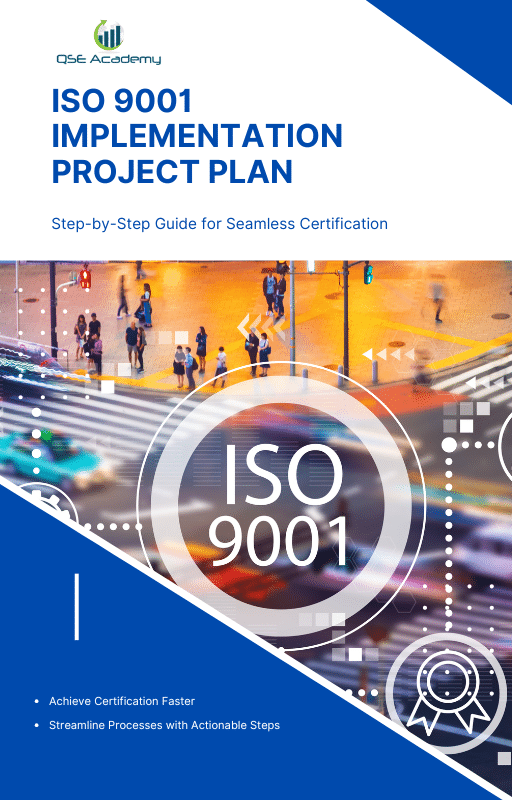ISO 9001 Basics You Must Know
ISO 9001 Basics You Must Know
Have you ever wondered how some businesses consistently deliver top-notch products or services while others struggle with quality issues? The secret often lies in a well-implemented quality management system, and that’s where ISO 9001 Basics come in.
ISO 9001 is one of the world’s most popular standards for quality management, and it’s designed to help businesses of all sizes and industries deliver consistent quality. Whether you’re running a small startup or managing a large corporation, understanding ISO 9001 Basics can give you the tools to improve processes, build customer trust, and reduce inefficiencies.
But what exactly does ISO 9001 cover, and why is it so important? In this article, we’ll break down the fundamentals of ISO 9001 Basics in a way that’s easy to understand and apply. By the end, you’ll see why mastering these basics is essential for creating a successful, quality-driven organization. Let’s dive in!
What is ISO 9001?
Let’s start with the basics: what exactly is ISO 9001, and why is it so important? At its core, ISO 9001 is an international standard for quality management systems (QMS). It provides a framework that helps businesses ensure they’re consistently delivering products and services that meet customer expectations. In other words, understanding ISO 9001 Basics is like learning the blueprint for running a reliable, efficient, and customer-focused organization.
ISO 9001 is part of the ISO 9000 family of standards and is recognized globally. This means that businesses with ISO 9001 certification are seen as trustworthy and committed to quality, no matter where they operate. Whether you’re running a local café or a multinational corporation, ISO 9001 applies to you.
Why Was ISO 9001 Created?
The goal of ISO 9001 is simple: to help businesses work smarter and deliver consistent results. Before this standard existed, businesses often relied on informal processes, which could lead to inconsistent quality. ISO 9001 introduced a structured approach to managing quality, giving businesses a way to monitor, measure, and improve their operations.
Who is ISO 9001 For?
Here’s the best part: ISO 9001 isn’t just for big companies or manufacturers—it’s for everyone. From small businesses to nonprofits, anyone can benefit from applying ISO 9001 Basics. It’s flexible enough to fit any industry, whether you’re in retail, healthcare, technology, or construction.
For example, a small bakery can use ISO 9001 to streamline how they manage inventory and ensure consistent product quality. A tech startup, on the other hand, might focus on using the standard to improve how they deliver software updates. That’s the beauty of ISO 9001 Basics—it’s adaptable to your specific needs.
What Does ISO 9001 Cover?
ISO 9001 focuses on several key areas, including:
- Customer Satisfaction: Ensuring that your customers are happy and that their needs are consistently met.
- Process Improvement: Looking for ways to make your business operations more efficient.
- Leadership Commitment: Making sure management is fully on board with maintaining quality.
- Risk Management: Identifying potential issues before they become problems.
These elements make up the foundation of ISO 9001 Basics and are critical for creating a reliable and successful organization.
Understanding these fundamentals is the first step in leveraging ISO 9001 to improve your business. In the next section, we’ll dive into why ISO 9001 Basics matter and how they can transform your operations. Let’s keep going!
Why ISO 9001 Basics Matter for Your Business
So, now that we’ve covered what ISO 9001 is, let’s talk about why ISO 9001 Basics are so important for your business. Whether you’re just starting out or running an established organization, understanding and implementing these basics can make a world of difference. Here’s how:
1. Ensures Consistency in Quality
One of the biggest benefits of applying ISO 9001 Basics is the ability to consistently deliver high-quality products or services. Think about it: your customers expect the same level of quality every time they interact with your business. ISO 9001 helps you put systems in place to make sure that happens, no matter the circumstances.
For example, imagine you’re running a catering business. Without clear processes, one event might go perfectly, but the next might face delays or mix-ups. By adopting ISO 9001 Basics, you can streamline your operations, ensuring every event is handled with the same level of care and efficiency.
2. Builds Customer Trust
Let’s face it—trust is everything in business. When customers know you’ve implemented ISO 9001 Basics, they feel confident that you’re committed to delivering quality and meeting their expectations. In fact, many clients actively seek out ISO-certified companies because it signals reliability.
For instance, if you’re a manufacturer bidding on a big contract, having ISO 9001 certification shows your potential clients that you have a robust quality management system in place. This can often be the deciding factor that wins you the deal.
3. Improves Efficiency and Reduces Waste
Another key advantage of adopting ISO 9001 Basics is the focus on efficiency. The standard encourages you to examine your processes, identify bottlenecks, and eliminate waste. Not only does this save time, but it also reduces costs—benefits that directly impact your bottom line.
Let’s say you’re managing a construction company, and you notice delays caused by poor communication between teams. By applying ISO 9001 Basics, you can create better workflows and communication systems, ensuring projects stay on schedule and within budget.
4. Encourages Continuous Improvement
ISO 9001 isn’t just about meeting today’s standards—it’s about constantly looking for ways to do things better. The concept of continuous improvement is a core part of ISO 9001 Basics, pushing businesses to adapt, innovate, and stay ahead of the competition.
For example, a small e-commerce store might use ISO 9001 to track customer feedback and adjust their processes to improve delivery times or product packaging. Over time, these small adjustments can lead to big results.
5. Gives You a Competitive Edge
In competitive markets, standing out can be tough. But businesses that implement ISO 9001 Basics often have a clear advantage. Certification demonstrates your commitment to quality, which can set you apart from competitors who haven’t taken this step.
Think about it—if you were choosing between two companies, and one had ISO 9001 certification while the other didn’t, which would you pick? The certification often acts as a tiebreaker, showing that you’re serious about delivering the best.
Why It Matters
In short, mastering ISO 9001 Basics isn’t just about following a standard—it’s about transforming your business. From gaining customer trust to improving efficiency and driving innovation, ISO 9001 offers tools that help you grow and succeed in a sustainable way.
In the next section, we’ll dive into the core principles of ISO 9001 Basics and how they guide businesses toward better performance. Let’s explore the building blocks of quality management together!
The Core Principles of ISO 9001 Basics
Now that we’ve talked about why ISO 9001 is so important, let’s dive into the heart of it: the core principles. These are the foundation of ISO 9001 Basics and guide businesses in building a strong quality management system. Think of these principles as the “rules of the road” that keep your organization on track toward consistent quality and continuous improvement.
Here’s a closer look at the core principles of ISO 9001 Basics and what they mean for your business:
1. Customer Focus
At its core, ISO 9001 is all about your customers. The first and most important principle is ensuring customer satisfaction. Businesses that embrace ISO 9001 Basics focus on understanding their customers’ needs and consistently delivering products or services that meet or exceed expectations.
Why it Matters:
When your business is customer-focused, you’re not just solving immediate problems—you’re building long-term relationships. For example, a retail store might use feedback surveys to better understand what customers want, then adjust their offerings accordingly. By doing this, you’re showing customers that they’re at the heart of everything you do.
2. Leadership Commitment
The second principle of ISO 9001 Basics emphasizes the importance of strong leadership. Leaders set the tone for the entire organization, ensuring that quality is a priority and that every team member understands their role in achieving it.
Why it Matters:
Imagine a company where the leadership isn’t invested in quality. Employees might cut corners or feel disconnected from the business’s goals. On the other hand, when leadership is engaged and supportive, the entire team is motivated to work toward a shared vision of excellence.
3. Process Approach
ISO 9001 encourages businesses to view their activities as interconnected processes rather than isolated tasks. This is known as the process approach, and it’s a fundamental part of ISO 9001 Basics. By understanding how different processes interact, businesses can optimize workflows and improve efficiency.
Why it Matters:
For example, a manufacturing company might recognize that delays in production are caused by inefficiencies in their supply chain. By addressing these issues as part of a larger process, they can improve overall performance instead of just tackling symptoms.
4. Continuous Improvement
No matter how good your business is, there’s always room to grow. Continuous improvement is a key principle of ISO 9001 Basics and encourages organizations to regularly evaluate and enhance their processes.
Why it Matters:
A small e-commerce company, for instance, might analyze customer feedback to identify ways to improve shipping times. Over time, these small adjustments add up, making the business more competitive and efficient.
5. Evidence-Based Decision Making
Another core principle of ISO 9001 Basics is using data to guide decisions. This means relying on facts and analysis rather than guesswork to identify areas for improvement and measure success.
Why it Matters:
Imagine a logistics company trying to reduce delivery times. Instead of guessing where delays occur, they analyze data from their routes and find that a specific warehouse is causing bottlenecks. With this information, they can take targeted action to solve the problem.
6. Relationship Management
The final principle focuses on managing relationships with stakeholders, including customers, suppliers, and employees. Businesses that follow ISO 9001 Basics understand that strong, collaborative relationships are key to long-term success.
Why it Matters:
For example, a construction firm might work closely with suppliers to ensure materials are delivered on time and meet quality standards. This collaboration leads to smoother projects and happier clients.
Bringing It All Together
The core principles of ISO 9001 Basics aren’t just theoretical—they’re practical tools for creating a more efficient, customer-focused, and successful business. By putting these principles into action, you’re not only improving your operations but also building a foundation for sustainable growth.
In the next section, we’ll explore how to implement ISO 9001 Basics in your organization, step by step. Ready to put these principles into practice? Let’s go!
Steps to Implement ISO 9001 Basics in Your Organization
Now that we’ve covered the core principles of ISO 9001 Basics, you might be wondering how to actually apply them to your business. Don’t worry—it’s not as daunting as it might seem. Implementing ISO 9001 is all about taking things step by step and making changes that fit your organization’s needs. Let’s walk through the process together.
1. Understand the Requirements
The first step in implementing ISO 9001 Basics is getting familiar with the standard itself. ISO 9001 outlines specific requirements for a quality management system (QMS), covering areas like leadership, processes, and continual improvement.
What to Do:
- Read through the ISO 9001 standard to understand the key requirements.
- Focus on how these requirements align with your existing processes.
- If it feels overwhelming, break it into smaller sections and tackle one area at a time.
2. Conduct a Gap Analysis
A gap analysis is like taking a snapshot of where your business is now compared to where it needs to be. It helps you identify what parts of your current operations meet ISO 9001 requirements and where there are gaps.
What to Do:
- Review your existing processes and compare them to the ISO 9001 standards.
- Identify areas where improvements are needed, like documentation, workflows, or customer feedback systems.
- Create a list of action items to address these gaps.
For example, if you realize that your team isn’t consistently documenting customer complaints, you can implement a system to track and resolve issues more effectively.
3. Develop a Quality Management System (QMS)
Your QMS is the backbone of ISO 9001, so this step is crucial. It’s all about creating clear processes, policies, and procedures that align with ISO 9001 Basics. Think of it as a roadmap for how your business delivers quality.
What to Do:
- Document your processes step by step, from production to customer service.
- Include details like roles, responsibilities, and how outcomes will be measured.
- Keep it simple and practical—your QMS should make things easier, not more complicated.
4. Train Your Team
Your team plays a vital role in making ISO 9001 Basics work. After all, they’re the ones carrying out the processes you put in place. That’s why training is a must.
What to Do:
- Hold workshops or training sessions to explain what ISO 9001 is and why it matters.
- Show employees how their roles fit into the QMS and how they contribute to quality.
- Encourage questions and feedback so everyone feels involved and invested.
When your team understands the “why” behind ISO 9001, they’re more likely to embrace the changes.
5. Conduct Internal Audits
Before going for ISO certification, it’s a good idea to test your system with internal audits. These audits give you a chance to catch any issues and make improvements before the official audit.
What to Do:
- Create a schedule for regular internal audits.
- Assign team members to review specific areas of your QMS.
- Use the findings to fine-tune your processes and fix any non-conformities.
Think of internal audits as your practice runs—they build confidence and ensure you’re ready for the real thing.
6. Prepare for Certification
Once you’ve implemented ISO 9001 Basics and conducted internal audits, it’s time to prepare for the certification process. This involves a formal review by an external auditor to confirm that your QMS meets ISO 9001 standards.
What to Do:
- Ensure all documentation is up to date and organized.
- Schedule your external audit with an accredited certification body.
- Be ready to answer questions and demonstrate how your processes work.
A Practical and Rewarding Journey
Implementing ISO 9001 Basics isn’t just about meeting a standard—it’s about creating a culture of quality and improvement in your business. By taking these steps, you’ll build a system that works for your team, delights your customers, and sets you apart from the competition.
In the next section, we’ll address some common misconceptions about ISO 9001 to clear up any lingering doubts you might have. Let’s keep the momentum going!
Common Misconceptions About ISO 9001 Basics
When it comes to understanding ISO 9001 Basics, it’s not uncommon to run into a few misconceptions. For some, ISO 9001 might seem like an overwhelming process or something that’s only useful for large corporations. But the truth is, ISO 9001 is designed to help businesses of all sizes succeed by creating a structured approach to quality management. Let’s debunk some of the most common myths about ISO 9001 Basics and set the record straight.
Misconception 1: “ISO 9001 is Only for Big Companies”
One of the most common misunderstandings is that ISO 9001 is designed for large corporations with huge budgets and extensive resources. But here’s the truth: ISO 9001 Basics are flexible and can be tailored to fit any business, regardless of size or industry.
The Reality:
Small businesses benefit just as much as large ones—if not more. Implementing ISO 9001 can help small companies streamline operations, reduce waste, and compete on a global scale. Whether you’re running a bakery, a marketing agency, or a tech startup, ISO 9001 Basics can provide the structure you need to grow and thrive.
Misconception 2: “It’s Too Complicated to Implement”
The idea of adopting ISO 9001 Basics can seem intimidating, especially if you’re new to the concept. Some people assume it involves mountains of paperwork and overly complex processes.
The Reality:
While implementing ISO 9001 does require some effort, it’s not as complicated as it might seem. The key is breaking it into manageable steps, like documenting your processes, training your team, and conducting internal audits. Plus, there are plenty of resources available—consultants, guides, and even software tools—that can simplify the journey.
Misconception 3: “ISO 9001 is All About Paperwork”
Another common myth is that ISO 9001 is just about creating endless documents to satisfy auditors. While documentation is a part of ISO 9001 Basics, it’s far from the whole picture.
The Reality:
ISO 9001 is focused on creating real, practical improvements in how your business operates. The goal is to build systems that ensure quality and efficiency—not to overwhelm you with paperwork. Think of the documentation as a tool to support your processes, not the end goal.
Misconception 4: “It’s a One-Time Certification”
Some people believe that once you’ve implemented ISO 9001 Basics and earned certification, the job is done. But ISO 9001 isn’t a one-and-done achievement—it’s an ongoing commitment to quality and continuous improvement.
The Reality:
ISO 9001 certification requires regular audits to ensure you’re maintaining the standard and making improvements where needed. This might sound like extra work, but it’s actually a huge benefit. It keeps your business sharp, adaptable, and competitive over the long term.
Misconception 5: “ISO 9001 Doesn’t Apply to My Industry”
Finally, some businesses assume that ISO 9001 doesn’t fit their specific field or operations. For instance, they might think it’s only for manufacturers or product-based companies.
The Reality:
ISO 9001 Basics are designed to be universal, meaning they can be applied to any industry. Whether you’re offering a service, manufacturing goods, or managing a supply chain, ISO 9001’s principles of quality management can help you operate more effectively.
Clearing Up the Confusion
As you can see, many of the misconceptions about ISO 9001 Basics are based on misunderstandings or outdated information. By looking past the myths and focusing on the real benefits, you’ll see that ISO 9001 is an accessible, practical tool for building a stronger business—no matter your size, industry, or goals.
In the next section, we’ll explore real-life examples of businesses that have successfully implemented ISO 9001 Basics and how it transformed their operations. Let’s keep going!
Real-Life Benefits of Mastering ISO 9001 Basics
Now that we’ve cleared up some common misconceptions, let’s talk about how mastering ISO 9001 Basics can make a real difference in the success of your business. Beyond the certifications and audits, businesses that embrace these basics often see significant improvements in their operations, customer relationships, and overall growth. Here are a few real-life examples to show how powerful ISO 9001 Basics can be.
1. A Small Retailer Improves Customer Satisfaction
Meet Lisa, the owner of a small boutique retail store. Lisa was passionate about her products, but she often struggled with inconsistent customer experiences. Sometimes orders were delayed, and customers didn’t always feel valued. Lisa decided to implement ISO 9001 Basics to create a more structured approach to customer service.
By documenting her processes, training her team, and setting clear quality goals, Lisa turned things around. She began tracking customer feedback and using it to make improvements. Within six months, her store’s customer satisfaction scores had increased by 25%. Customers noticed the difference, and many became loyal repeat buyers.
2. A Manufacturing Company Reduces Waste
Then there’s John, who runs a mid-sized manufacturing company. John’s business was growing, but he noticed they were wasting a lot of materials and dealing with frequent production delays. He decided to dive into ISO 9001 Basics to streamline his operations.
By analyzing his processes and identifying inefficiencies, John implemented changes that reduced waste and improved production timelines. For example, he standardized quality checks at key stages of production, catching issues early before they became costly mistakes. Over time, John’s company saved thousands of dollars and improved delivery times for customers.
3. A Tech Startup Builds Client Trust
Sarah, the founder of a tech startup, was eager to land big clients but kept running into one issue—potential customers wanted to know her company had robust quality management practices in place. That’s when Sarah turned to ISO 9001 Basics as a solution.
She worked with her team to document processes, improve project management, and create a system for gathering and acting on client feedback. After earning ISO 9001 certification, Sarah found it much easier to attract large clients. They trusted her company because it showed a clear commitment to quality and reliability. In just a year, her startup’s revenue doubled.
4. A Healthcare Provider Increases Efficiency
Finally, let’s talk about a healthcare provider that used ISO 9001 Basics to improve patient care. The organization was dealing with long wait times and inconsistent service levels across different departments. By implementing the principles of ISO 9001, they created standardized processes for patient intake, staff communication, and follow-up care.
The result? Patients experienced faster, more reliable service, and the healthcare provider saw an increase in positive reviews and referrals. The organization became a model of quality in its field, proving that ISO 9001 Basics aren’t just for businesses—they can also transform service-based operations.
What These Stories Teach Us
These examples highlight one thing: mastering ISO 9001 Basics isn’t just about earning a certification—it’s about creating real, tangible improvements that benefit both your business and your customers. Whether it’s boosting efficiency, reducing costs, or building trust, the principles of ISO 9001 can help businesses thrive in competitive markets.
Your Success Story Could Be Next
If you’re inspired by these success stories, why not take the first step toward implementing ISO 9001 Basics in your own organization? With a little effort and commitment, you could transform the way your business operates—and see incredible results along the way.
In the final section, we’ll wrap things up and explain why ISO 9001 Basics are essential for achieving long-term success. Let’s finish strong!
Conclusion: Why ISO 9001 Basics Are Essential for Long-Term Success
By now, it’s clear that ISO 9001 Basics are more than just guidelines—they’re a blueprint for building a successful, efficient, and customer-focused organization. Whether you’re a small business owner looking to streamline operations or a larger company aiming to improve consistency, understanding and implementing these basics is one of the smartest moves you can make.
Why ISO 9001 Basics Matter
At its core, ISO 9001 Basics are about creating a quality management system that works for your business. It’s not just about earning a certificate or ticking off boxes—it’s about making meaningful changes that lead to real results. When you master these basics, you’re setting your organization up for benefits like:
- Consistently high-quality products and services.
- Stronger trust and loyalty from customers.
- Greater efficiency and reduced costs.
- A culture of continuous improvement that keeps your business growing.
A Journey Worth Taking
Of course, implementing ISO 9001 Basics takes time and effort, but the rewards are well worth it. Think of it as an investment in your business’s future. By focusing on quality, you’re not just solving problems—you’re creating opportunities for growth, innovation, and success.
Remember the stories we shared earlier—about the retailer, manufacturer, tech startup, and healthcare provider? Each of them started with the basics, and it led to transformational results. Your business could be next.
Your Next Steps
So, what’s the first step? Start by understanding the requirements of ISO 9001 and how they apply to your business. Conduct a gap analysis, develop your processes, and train your team. It doesn’t have to happen overnight—small, consistent steps can lead to big changes.
And don’t be afraid to ask for help! Whether it’s hiring a consultant, attending workshops, or using online resources, there’s plenty of support available to guide you through mastering ISO 9001 Basics.
The Key to Building a Stronger Business
In a world where quality is king, ISO 9001 Basics give you the tools to stand out, build trust, and create long-term success. Whether you’re looking to improve customer satisfaction, boost efficiency, or expand into new markets, these basics are the foundation for achieving your goals.
Your journey starts here. Are you ready to take the first step toward mastering ISO 9001 Basics? The future of your business depends on it!
Looking for More Resources on ISO 9001?
Looking for ISO 9001 Resources Tailored to Your Industry?
If this article helped clarify ISO 9001, take the next step with our industry-focused tools designed to simplify your certification journey:
📦 ISO 9001 Documentation Kits by Industry: Whether you’re in manufacturing, construction, consulting, or healthcare — we have complete, ready-to-use documentation tailored for your sector.
🎓 Online ISO 9001 Training: Learn how to implement ISO 9001 effectively with our easy-to-follow video lessons, real-world examples, and practical exercises.
📋 ISO 9001 Checklist: Download our step-by-step checklist to ensure your QMS meets all the 9001:2015 requirements from start to finish.
These resources are crafted to save you time, reduce stress, and help you achieve certification with confidence. Choose your industry and start now!

👋 Hi, I’m HAFSA, and for the past 12 years, I’ve been on a journey to
make ISO standards less intimidating and more approachable for everyone.
Whether it’s ISO 9001, ISO 22000, or the cosmetics-focused ISO 22716,
I’ve spent my career turning complex jargon into clear, actionable steps
that businesses can actually use. I’m not here to call myself an expert—I prefer “enthusiast” because I truly love what I do.
There’s something incredibly rewarding about helping people navigate food safety and quality management systems
in a way that feels simple, practical, and even enjoyable.
When I’m not writing about standards, you’ll probably find me playing Piano 🎹, connecting with people, or diving into my next big project💫.
I’m an engineer specialized in the food and agricultural industry
I have a Master’s in QHSE management and over 12 years of experience as a Quality Manager
I’ve helped more than 15 companies implement ISO 9001, ISO 22000, ISO 22716, GMP, and other standards
My clients include food producers, cosmetics manufacturers, laboratories, and service companies
I believe quality systems should be simple, useful, and efficient
Outside of work, I play piano and love learning something new every day
Let’s make ISO less about stress and more about success! 🙏


